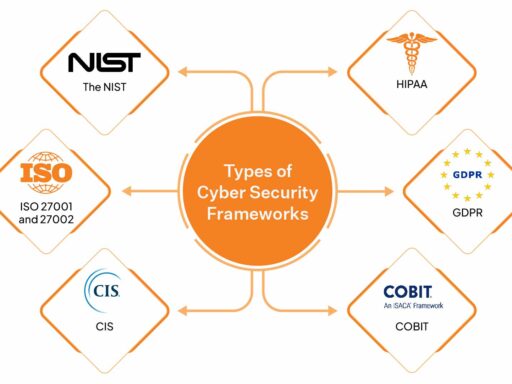Cyber warfare continues to evolve as adversaries discover new stealthy methods to evade detection and maintain their persistence capabilities. Advanced Persistent Threat (APT) groups use social media platforms including Facebook Twitter and YouTube as stealthy command-and-control channels for their malware. Attackers embed encoded instructions into ordinary social media posts and […]
About: SALEM AL-NAGGAR
- Website
- https://alnaggar.net
- Profile
- Cybersecurity Engineer | Penetration Tester | System Administrator Passionate about protecting digital landscapes, I specialize in cybersecurity engineering, penetration testing, and system administration. With hands-on expertise in uncovering vulnerabilities and securing systems, I strive to make the online world a safer place. When I’m not exploring new technologies, I enjoy sharing knowledge and staying ahead in the fast-paced cybersecurity industry.
Posts by SALEM AL-NAGGAR:
Understanding Cybersecurity Frameworks and Standards: A Guide for Cybersecurity Analysts
the importance of cybersecurity cannot be overstated. Organizations face ever-evolving threats that require robust, adaptable, and scalable strategies. Enter cybersecurity frameworks and standards — tools that provide structured guidelines for managing and mitigating risks. But what exactly are these frameworks and standards, and how can you, as a cybersecurity analyst, […]
Why Adopting a “Bad Guy” Mindset is Key for Pentesters
In the world of cybersecurity, the goal is clear: protect systems, data, and networks from malicious actors. But when it comes to penetration testing (pentesting), achieving this goal often requires thinking like the very attackers you aim to defend against. While the idea of adopting a “bad guy” mindset may […]
The Importance of Report Documentation in Penetration Testing Engagements
In the world of penetration testing, delivering technical findings and security insights to clients is a cornerstone of success. While the actual testing phase garners most of the spotlight, report documentation is just as crucial—if not more so—in ensuring the effectiveness and value of the engagement. Here’s why proper documentation […]
Tips for SOC Analysts: Enhancing Efficiency and Staying Ahead
As a Security Operations Center (SOC) analyst, you are on the front lines of your organization’s cybersecurity defense. Your role is critical for identifying and mitigating potential threats, minimizing damage, and ensuring the security of sensitive data. To excel in this dynamic and demanding field, here are some actionable tips […]
Using SSH in Hacking: A Comprehensive Guide with Terminal Commands
Secure Shell (SSH) is a powerful protocol widely used for remote administration and secure data transfer. As a cybersecurity enthusiast or professional, understanding how to leverage SSH during penetration testing can significantly enhance your toolkit. In this article, we’ll dive into SSH basics, its use in hacking, and explore essential […]
The Rising Threat: How AI Is Revolutionizing Phishing Attacks
Artificial intelligence technology transforms different business domains, including cybersecurity operations. Misusing artificial intelligence through phishing attacks threatens organizations and their members. Phishing attacks deceive users by pretending to be trustworthy entities to extract sensitive information, including login credentials or financial data. AI-based malicious activities have become more sophisticated and effective […]
The Cybersecurity Outlook for 2025: Key Challenges and Emerging Threats
The cybersecurity landscape will change dramatically in 2025 because of advancing threats, new technologies, and intensified regulatory oversight. Companies must protect their sensitive data while providing users a seamless experience. This document examines crucial cybersecurity issues and trends that will characterize the year. AI: A Tool for Both Defense and […]
Living Off the Land: The Silent Threat in Cybersecurity
In the ever-evolving world of cybersecurity, attackers constantly adapt their methods to stay ahead of detection. One of the most insidious strategies in recent years is the use of Living Off the Land (LOTL) cyber attacks. These attacks exploit legitimate tools and processes already present on a target system, making […]
Advanced AI Models Being Exploited for Malware Development and Model Theft
Researchers in cybersecurity have revealed that large language models (LLMs) can be leveraged to create variants of malicious JavaScript code on a large scale, significantly improving their ability to bypass detection mechanisms. “While LLMs are not inherently designed to generate malware, they can be used to modify or obfuscate existing […]









